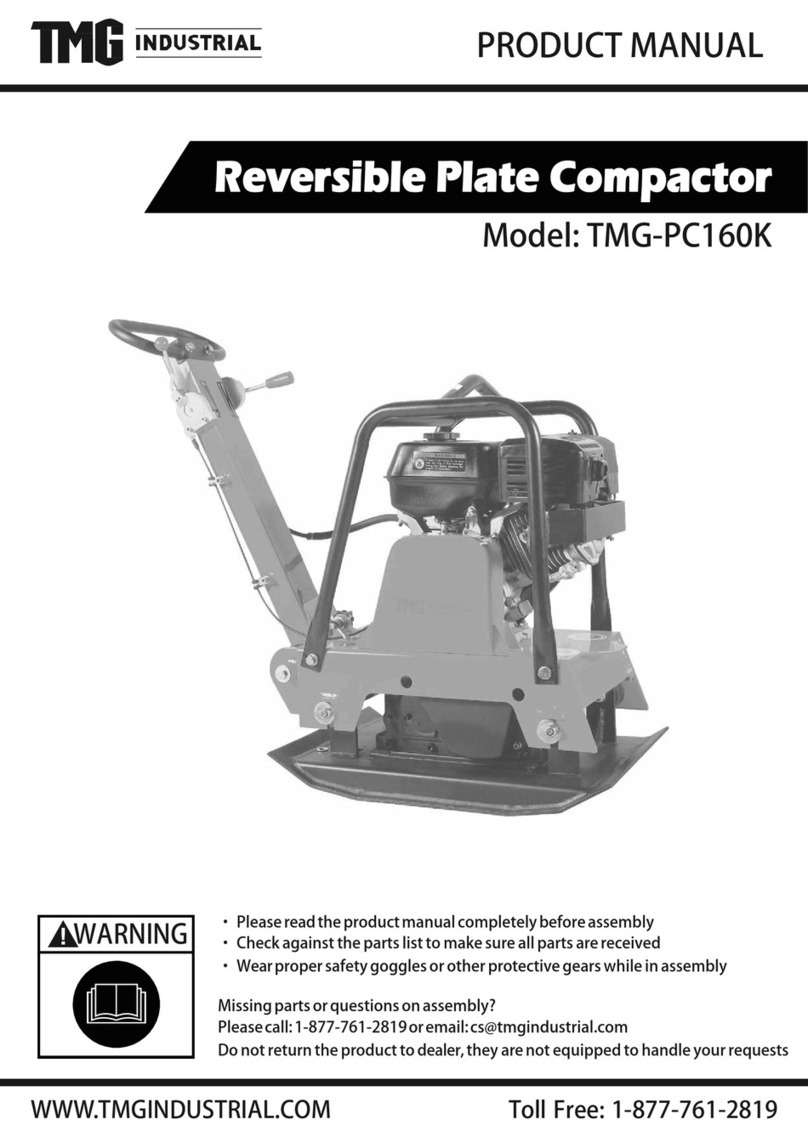
12 | English
Demolition Ham-
mer GSH 16-28 GSH 16-30
EPTA-Procedure
01:2014
Protection class / II / II
The specifications apply to a rated voltage [U] of 230 V. These spe-
cifications may vary at different voltages and in country-specific mod-
els.
Noise/Vibration Information
Noise emission values determined according to
EN 60745-2-6.
Typically, the A-weighted noise level of the power tool is:
93dB(A); sound power level 104dB(A). Uncertainty
K=3dB.
Wear hearing protection
Total vibration values ah (triax vector sum) and uncertainty K
determined according to
EN 60745-2-6:
Chiselling: ah=13m/s2, K=1,5m/s2
The vibration level given in these instructions has been
measured in accordance with a standardised measuring pro-
cedure and may be used to compare power tools. It can also
be used for a preliminary estimation of exposure to vibra-
tion.
The stated vibration level applies to the main applications of
the power tool. However, if the power tool is used for differ-
ent applications, with different application tools or poorly
maintained, the vibration level may differ. This can signific-
antly increase the exposure to vibration over the total work-
ing period.
To estimate the exposure to vibration accurately, the times
when the tool is switched off or when it is running but not ac-
tually being used should also be taken into account. This can
significantly reduce the exposure to vibration over the total
working period.
Implement additional safety measures to protect the oper-
ator from the effects of vibration, such as servicing the
power tool and application tools, keeping the hands warm,
and organising workflows correctly.
Assembly
Carrying handle
The carrying handle (3) can be turned to any position.
Loosen the knurled nut(4), rotate the carrying handle (3)
around the axis of the tool to the required position and
retighten the knurled nut (4).
The carrying handle (3) can be refitted in a different posi-
tion. Completely unscrew the knurled nut (4) and then pull
the hexagon bolt upwards and out. Pull off the carrying
handle (3) to the side and rotate the remaining clamping ele-
ment by 180°. Fit the carrying handle (3) by following the
steps in reverse order.
Changing the tool (GSH 16-28)
uPull the plug out of the socket before carrying out any
work on the power tool.
Clean the tool shank (7) and apply a light coating of grease.
Application tools without collar (see figuresA – B)
– Pivot the tool retainer (6) upwards by approx. 150° and
insert the application tool into the tool holder (8).
– Pivot the tool retainer (6) back down to lock the applica-
tion tool in place.
– Check that it is locked by pulling on the tool.
Application tools with collar (see figuresC – D)
Application tools with an insertion length of 152mm (6") to
the collar can be used.
– Pivot the tool retainer (6) upwards by approx. 180° and
insert the application tool into the tool holder (8).
– Pivot the tool retainer (6) back as far as the application
tool to lock it in place. The collar (9) must be held by the
tool retainer (6).
– Check that it is locked by pulling on the tool.
Changing the tool (GSH 16-30)
uPull the plug out of the socket before carrying out any
work on the power tool.
– Clean the tool shank (7) and apply a light coating of
grease.
– Pull out the lock bolt (5) and turn it anticlockwise by
180°. Allow the lock bolt 5 to engage again.
– Push the application tool all the way into the tool holder
(8). The groove of the tool shank (7) must face upwards
as shown in the figure.
– Pull out the lock bolt (5) and turn it clockwise by 180°. Al-
low the lock bolt (5) to engage again.
– Check that it is locked by pulling on the tool.
Dust/Chip Extraction
Dust from materials such as lead-containing coatings, some
wood types, minerals and metal can be harmful to one’s
health. Touching or breathing-in the dust can cause allergic
reactions and/or lead to respiratory infections of the user or
bystanders.
Certain dust, such as oak or beech dust, is considered carci-
nogenic, especially in connection with wood-treatment ad-
ditives (chromate, wood preservative). Materials containing
asbestos may only be worked by specialists.
– Provide for good ventilation of the working place.
– It is recommended to wear a P2 filter-class respirator.
Observe the relevant regulations in your country for the ma-
terials to be worked.
uAvoid dust accumulation at the workplace. Dust can
easily ignite.
1 609 92A 2BF | (01.02.2019) Bosch Power Tools






















